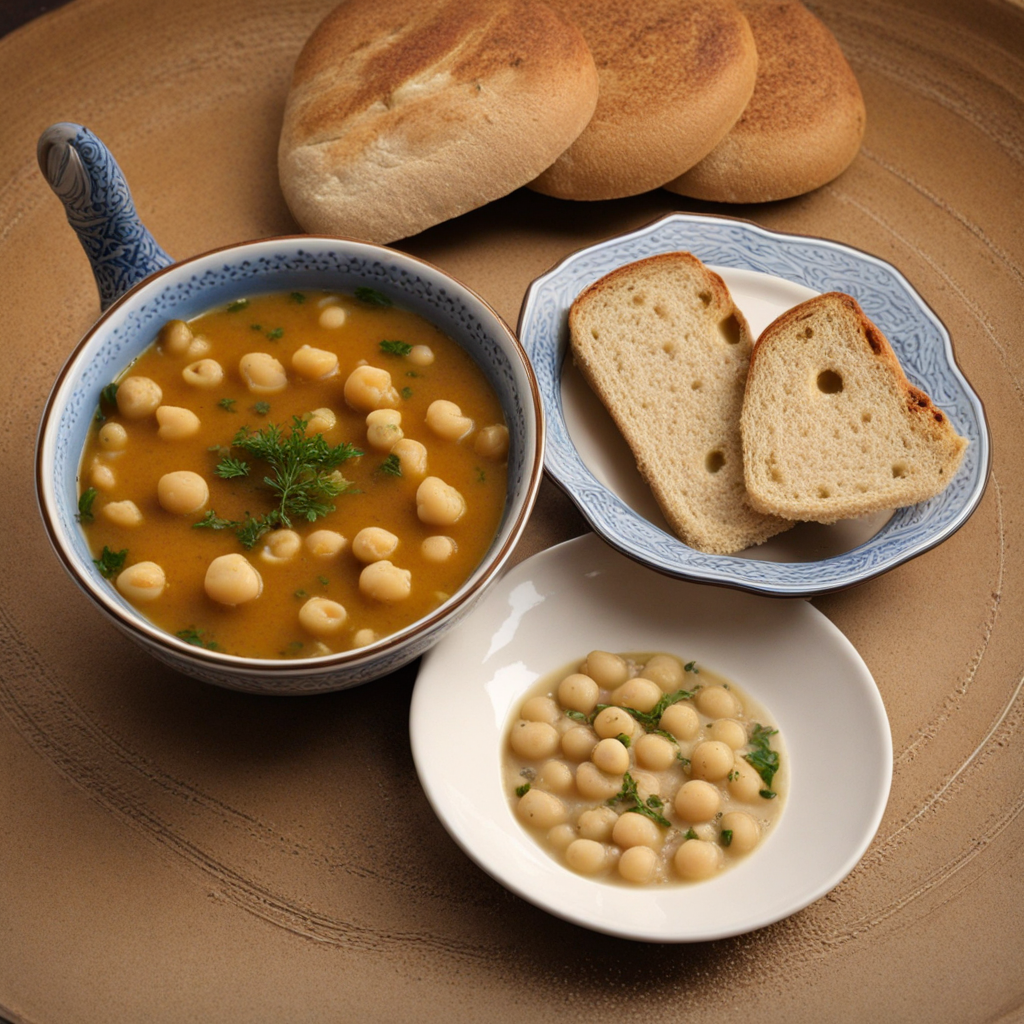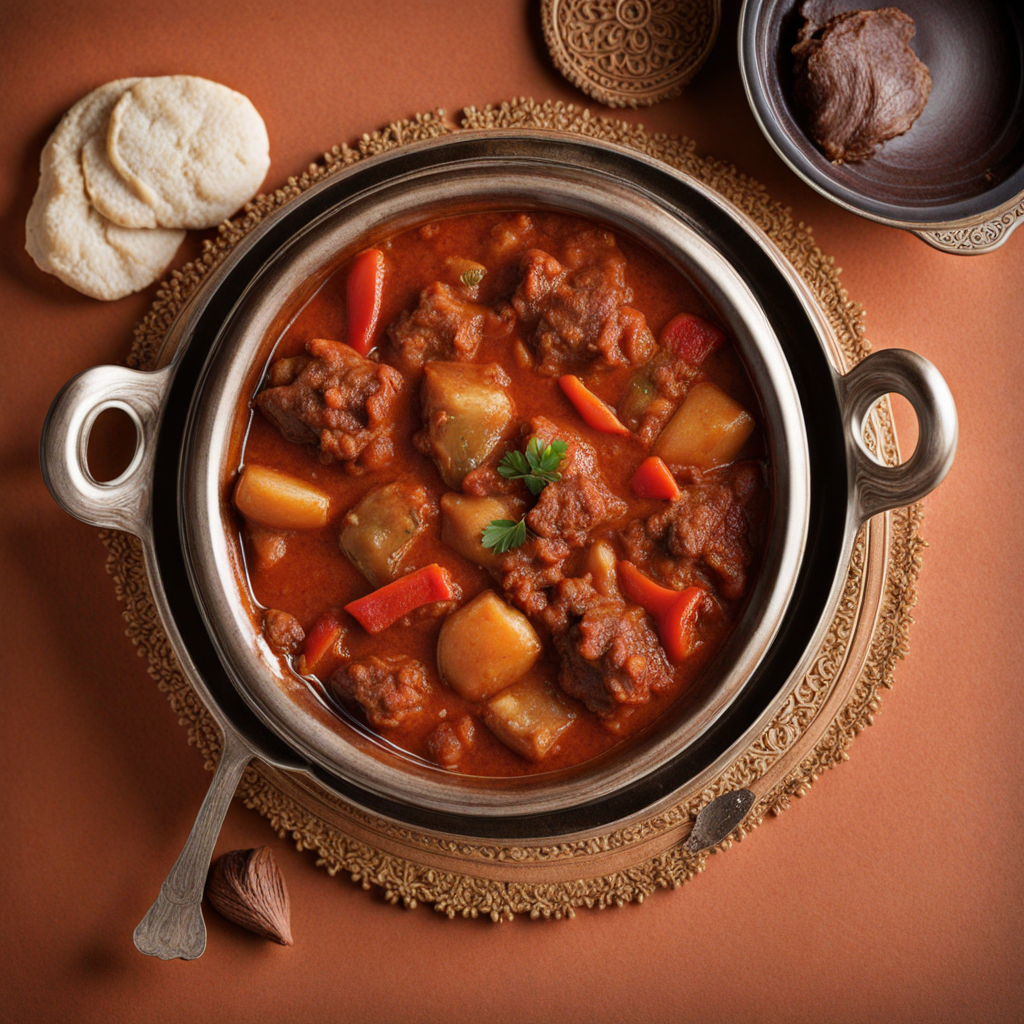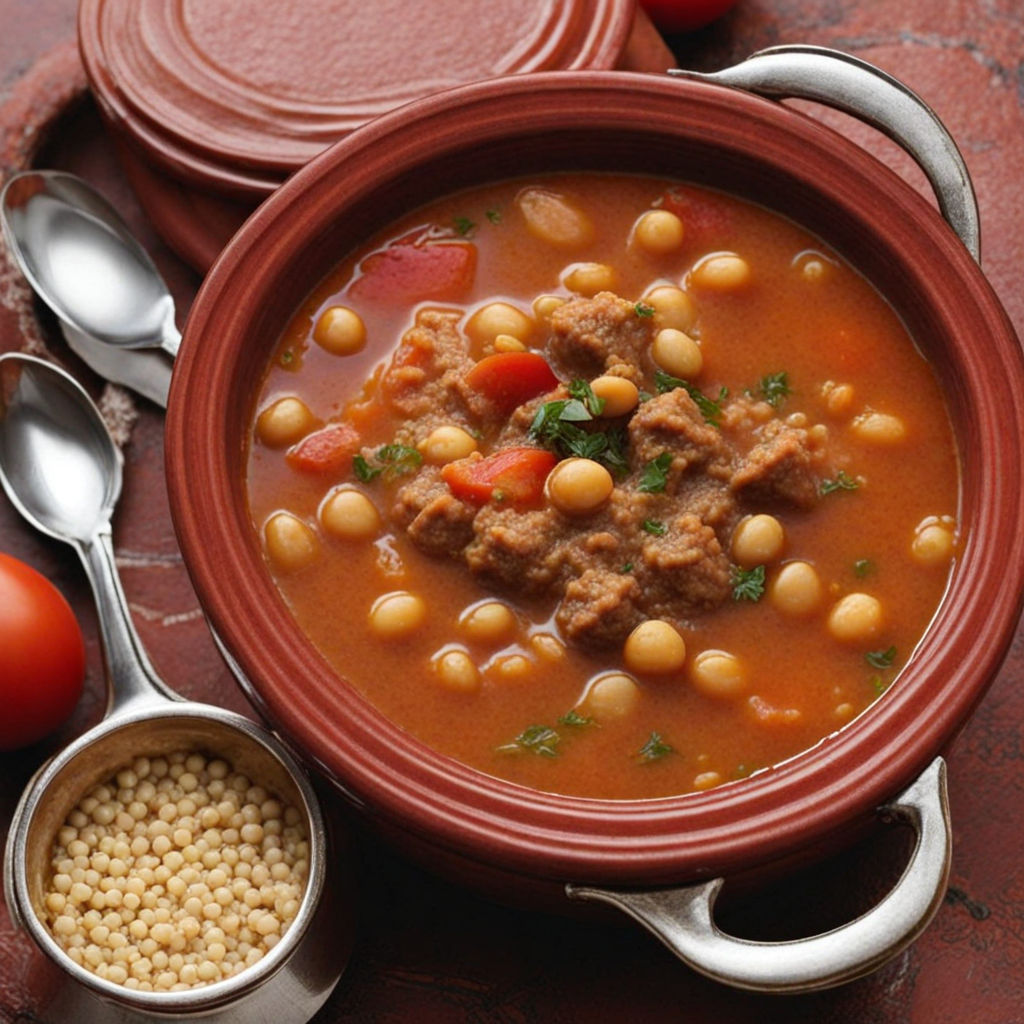Lablabi
Lablabi is a traditional Tunisian dish that embodies the essence of comfort food with its hearty and flavorful components. At its core, Lablabi is a chickpea soup, often served over a bed of crusty bread, which soaks up the rich broth. The chickpeas are usually cooked until tender and infused with a blend of aromatic spices like cumin, coriander, and garlic, creating a warm and inviting aroma that fills the air. The dish is often garnished with a drizzle of olive oil, a squeeze of lemon juice, and a sprinkle of harissa, a spicy chili paste that adds a delightful kick and depth to the flavor profile. As you dive into a bowl of Lablabi, you'll experience the comforting combination of textures, from the tender chickpeas to the crusty bread that melds beautifully with the broth. The heat from the harissa balances perfectly with the richness of the olive oil, while the citrusy zing from the lemon brightens the overall taste. Each bite is a harmonious blend of flavors that reflect the vibrant culinary traditions of Tunisia, making it a dish that warms the heart and satisfies the soul. Often enjoyed as a breakfast or a late-night snack, Lablabi is more than just a meal; it is a cultural experience that invites you to savor the simple yet profound flavors of Tunisian cuisine. Whether topped with a poached egg, olives, or even tuna, every variation of Lablabi showcases the versatility of this beloved dish. It's a perfect introduction for food enthusiasts seeking to explore new tastes and immerse themselves in the culinary heritage of Tunisia.
How It Became This Dish
The History of لبلابي (Lablabi): A Tunisian Culinary Treasure #### Origins of Lablabi Lablabi, a beloved Tunisian dish, is more than just a meal; it is a cultural emblem that encapsulates centuries of culinary evolution in North Africa. The origins of lablabi can be traced back to the ancient Berber tribes who inhabited the region long before the arrival of the Arabs in the 7th century. These indigenous peoples cultivated chickpeas and other legumes, which formed the backbone of their diet. The use of chickpeas in lablabi speaks to the adaptability of the Berber diet and its ability to incorporate local ingredients and flavors. As the Islamic empire expanded, Tunisia became a melting pot of cultures and cuisines. Arab traders, Spanish influences, and Italian settlers all played a role in shaping the culinary landscape. The introduction of spices such as cumin and coriander, alongside garlic and harissa—a spicy chili paste—transformed lablabi into a dish with a distinctly Tunisian flair. By the 19th century, lablabi was well established as a popular street food, especially among the working class, who sought hearty and affordable meals. #### Cultural Significance Lablabi is deeply woven into the social fabric of Tunisian life. It is typically served in a bowl, made with a base of chickpeas simmered in a spiced broth, often garnished with stale bread, hard-boiled eggs, and a drizzle of olive oil. The dish is commonly consumed for breakfast or as a light lunch, embodying the Tunisian ethos of communal dining. It is not uncommon for families to gather around a pot of lablabi, sharing stories and laughter while savoring the rich flavors. In addition to its social aspects, lablabi has been embraced for its nutritional value. Chickpeas are an excellent source of protein, fiber, and essential vitamins, making lablabi a wholesome choice for people from all walks of life. This nutrient-rich dish has gained popularity among health-conscious individuals and vegetarians, reflecting a broader global trend toward plant-based diets. #### Regional Variations and Development Over Time While lablabi is a quintessentially Tunisian dish, it has evolved and diversified over the years, giving rise to various regional interpretations. In coastal areas, seafood might be incorporated, reflecting the bounty of the Mediterranean. In contrast, inland preparations may lean more heavily on spices and herbs, showcasing the agricultural richness of the Tunisian interior. Street vendors have played a crucial role in the development of lablabi, particularly in urban centers like Tunis and Sfax. These vendors often specialize in lablabi, serving it from small stalls or food trucks, where patrons can enjoy it hot and fresh. The lively atmosphere of the street food scene adds to the allure of lablabi, making it a popular choice for busy locals and tourists alike. In recent years, lablabi has experienced a renaissance, fueled by a growing interest in traditional cuisines worldwide. As Tunisia opened its doors to global tourism, culinary enthusiasts have sought out authentic experiences, leading to an increased appreciation for local dishes like lablabi. This renewed interest has prompted chefs to experiment with the dish, incorporating modern techniques and ingredients while staying true to its roots. #### The Role of Lablabi in Tunisian Celebrations Lablabi is not only a staple food; it also holds a special place in Tunisian celebrations and rituals. During religious observances, such as Ramadan, it is commonly served as an iftar dish, breaking the fast at sunset. Its warmth and heartiness make it an ideal choice for families gathering to celebrate the end of a day of fasting. The dish's association with hospitality further cements its status as a symbol of generosity and community. In addition to its role during Ramadan, lablabi is often prepared during family gatherings, weddings, and other special occasions. It is a dish that encourages sharing, emphasizing the importance of togetherness in Tunisian culture. The preparation of lablabi can also be a communal effort, where family members come together to cook and enjoy the process, fostering bonds that transcend generations. #### Lablabi in the Global Culinary Scene As the world becomes increasingly interconnected, traditional foods are being rediscovered and celebrated on a global scale. Lablabi has found its way onto menus in restaurants that focus on Mediterranean and North African cuisine, introducing it to a wider audience. Chefs are reinterpreting the dish, playing with textures and flavors while respecting its origins. Some have experimented with different legumes or the inclusion of various sauces, appealing to contemporary palates while maintaining the essence of lablabi. Social media platforms have also contributed to the dish's popularity, with food bloggers and influencers showcasing the vibrant colors and textures of lablabi. The visual appeal of the dish, combined with its rich history, has made it an attractive subject for culinary storytelling. This has not only sparked interest in lablabi but has also contributed to a broader appreciation for Tunisian cuisine as a whole. #### Conclusion Lablabi stands as a testament to Tunisia's rich culinary heritage—a dish born from the land's agricultural bounty and shaped by centuries of cultural exchange. Its evolution from a humble street food to a beloved national dish reflects the resilience and creativity of the Tunisian people. Today, lablabi continues to thrive, bridging the gap between tradition and modernity, while remaining a symbol of community and shared experiences. As we savor a bowl of lablabi, we partake in a narrative that transcends time, connecting us to the past while embracing the future. Whether enjoyed in a bustling market or a quiet family home, lablabi is a reminder of the importance of food in shaping identity and fostering connections among people, making it an enduring emblem of Tunisian culture.
You may like
Discover local flavors from Tunisia







